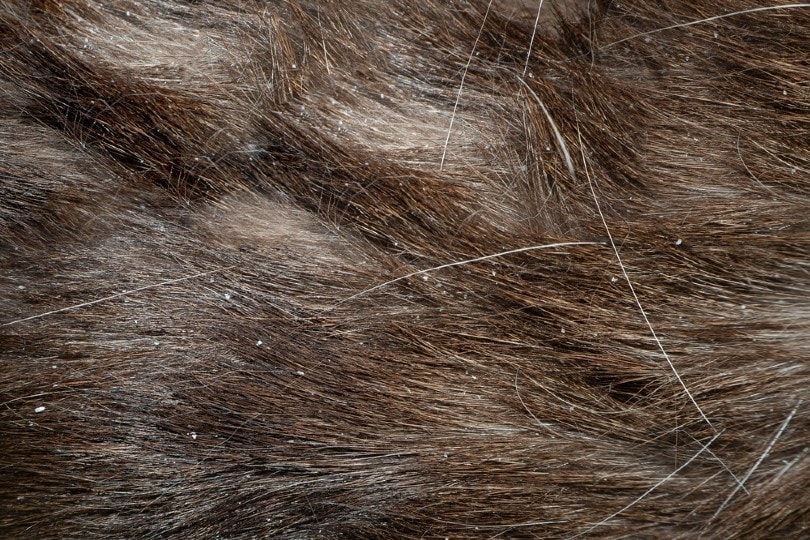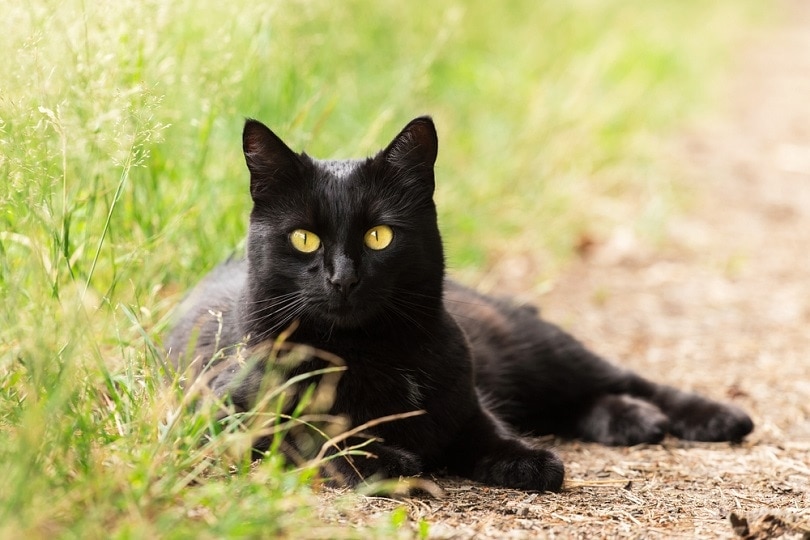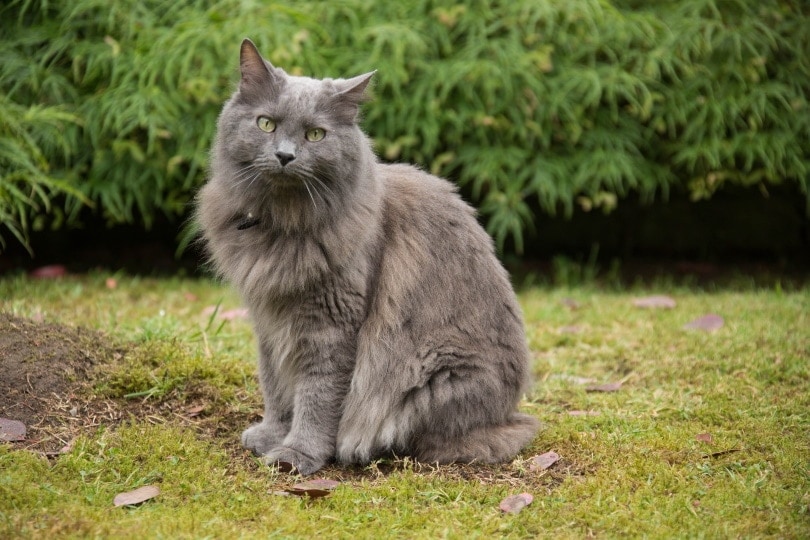Haws Syndrome in Cats: Causes, Signs, & Possible Treatments
By Jessica Kim
Updated on

Click to Skip Ahead
Cats have a nictitating membrane, also called the third eyelid, that cleans and protects their eyes. It usually remains hidden from view, but there are times when you can see it. In most cases of healthy cats, you might spot their third eyelid when they’re in deep relaxation and napping. However, there are times when your cat’s fully awake, and their third eyelid is protruding from the inner corners of their eyes.
This condition may be attributed to Haws syndrome. While it may look alarming, it’s usually a self-limiting condition that goes away on its own. Even though Haws syndrome in itself may not be serious, it’s still important to get your cat examined by a veterinarian anyway because it can be associated with gastrointestinal complications or other underlying medical conditions.
What Is Haws Syndrome in Cats?
Cats have a third eyelid called a nictitating membrane. Haws syndrome refers to an occurrence in which a cat’s third eyelids protrude and cover a part of the eyes. It’s also known as bilateral nictitans protrusion or bilateral third eyelid protrusion. When the third eyelid is functioning normally, it sweeps across the cornea and works to spread tears and protect the eyes. The third eyelid typically has a pale pink color, but some cats may have third eyelids with darker pigmentation on the surface. The nictitating membrane usually isn’t visible when a cat’s eyes are open and remains hidden from view.
Haws syndrome may cause an obstruction and limit a cat’s ability to see due to covering a part of the eyes. However, it doesn’t weaken a cat’s vision nor is considered painful. So, when veterinarians diagnose a cat with Haws syndrome, their third eyelids are elevated, but there are no other signs of eye issues.
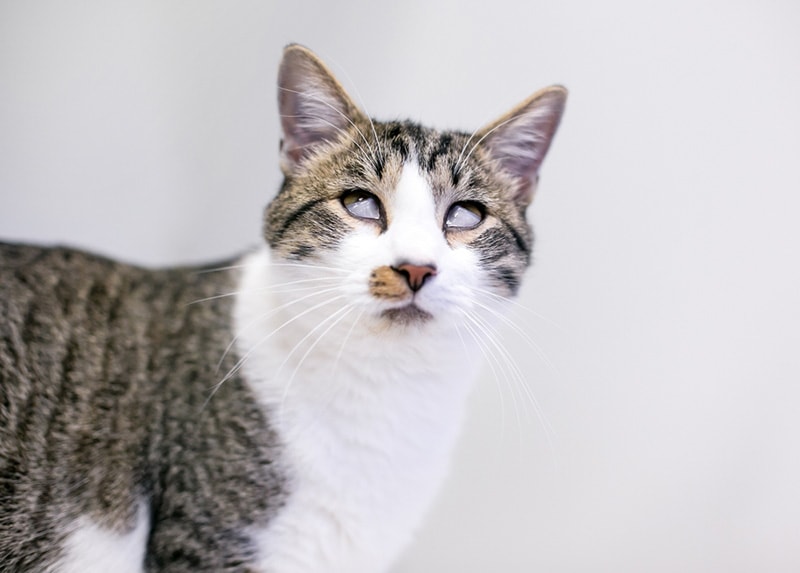
What Are the Signs of Haws Syndrome in Cats?
The most prominent sign of Haws syndrome is the protruding third eyelid on both of a cat’s eyes. Haws syndrome is often associated with diarrhea but no other signs of illness.
Haws syndrome isn’t painful to cats. However, it’s still essential to consult your veterinarian and obtain an accurate diagnosis and a management plan because the signs can mimic other more serious conditions. So, if you notice protruding third eyelids in your cat, it’s best to schedule an appointment with your veterinarian right away.
Your veterinarian will likely conduct a full physical, neurological, and ocular examination and administer some phenylephrine eye drops to reach a diagnosis. If your cat has any digestive signs, your vet will probably run some tests or administer antiparasitic treatment to tackle any possible intestinal worms.
What Are the Causes of Haws Syndrome in Cats?
Haws syndrome’s cause is currently unknown. Links to gastrointestinal issues and Haws syndrome have been observed. Cats with bacterial and viral infections in the gut may end up with it. Parasitic infections, including tapeworms, may also happen at the same time as Haws syndrome.
It’s possible for cats to experience Haws syndrome without having any links to a gastrointestinal issue. There are also some cases in which other cats in the same household will develop Haws syndrome after another cat has it. However, it’s important to note that this doesn’t necessarily mean that Haws syndrome is contagious. More research needs to be done for a more conclusive answer to multiple occurrences of Haws Syndrome appearing in multi-cat homes.
Haws syndrome can also affect cats of all ages, but it seems to be most prominent in young adult cats that are around 2 years old. There aren’t any specific cat breeds that are more susceptible or at risk of Haws syndrome. Sufficient evidence isn’t available to determine if Haws syndrome has higher occurrences in male or female cats. It’s also possible for cats to experience Haws syndrome multiple times throughout their lifetimes.

How Do I Care for a Cat With Haws Syndrome
Fortunately, Haws syndrome isn’t painful for cats, and it is usually self-limiting. This means that it’ll usually go away on its own. It can take between 4 to 6 weeks for the third eyelid to retreat and return to its normal position.
In extreme cases where the third eyelid is covering a significant portion of your cat’s eyes and affecting their vision, your veterinarian may prescribe phenylephrine eye drops. It’s important to note that these eyedrops are only meant to provide temporary relief by reversing the third eyelid protrusion, but they don’t speed up the recovery process for Haws syndrome.
Since Haws syndrome has links to gastrointestinal issues, your veterinarian may prescribe a treatment plan to help alleviate the signs and treat your cat’s gastrointestinal issues. Haws syndrome can go away on its own as you address these underlying issues. Keep in mind that some treatment plans for many gastrointestinal issues can take several weeks to complete, and it’s important to stick to them to help your cat reach full recovery. For example, if your cat is diagnosed with intestinal worms, it’s important to administer all medication according to their schedule to ensure the infestation gets fully eradicated.
If your cat has Haws syndrome and a gastrointestinal issue, it’s important to provide an extra cozy and comfortable home environment for them as they recover. Stress can affect a cat’s health negatively, so keeping your home a peaceful and safe space for your cat can positively impact their recovery rate. Your veterinarian may also prescribe a bland diet for your cat to ease digestive issues. Make sure to follow your vet’s recommendations and gradually reintroduce your cat to their regular food to prevent another case of an upset stomach.
It’s also important to keep up with litter box cleaning, especially if your cat has a parasitic infection in conjunction with Haws syndrome. Make sure to deep clean and disinfect your cat’s litter box as soon as possible. Then, scoop regularly to ensure that your cat consistently has a clean place to go to when they have to relieve themselves.
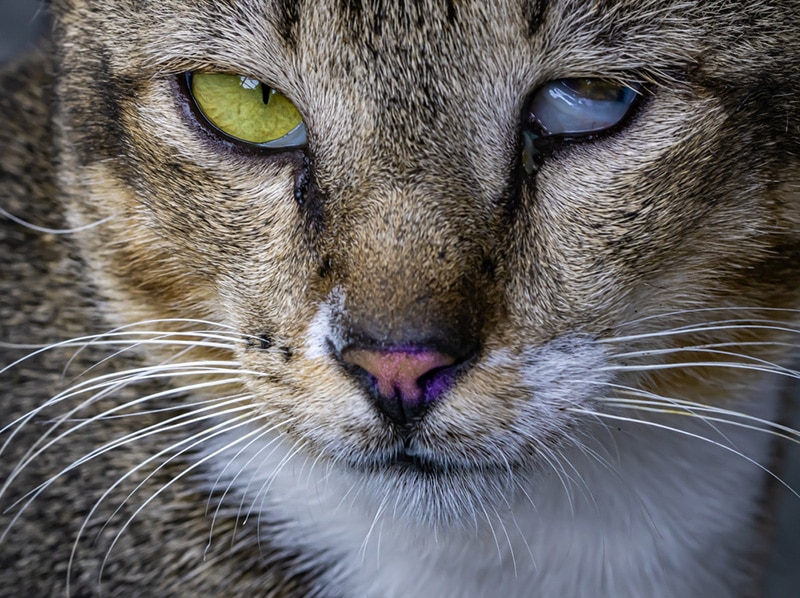
Frequently Asked Questions
Is Haws syndrome contagious?
With the current information, Haws syndrome is not considered contagious. The cause is unknown, although some reports have linked the condition to a Torovirus infection, presence of intestinal parasites, and neurological disease. While it may be possible for cats of the same household to get Haws syndrome at around the same time, no scientific report has demonstrated an infectious cause in all cases.
It is important to note that cats may end up passing intestinal parasites to each other if they share the same litter box and use the same food and water bowls. So, if you live in a multi-cat home and one of your cats develops Haws syndrome, it’s important for all your cats to receive a checkup from your veterinarian.
What is the prognosis for Haws syndrome?
Haws syndrome has a generally good prognosis. It usually goes away on its own in 1 or 2 months without any specific treatment. If you work on helping your cat recover from their gastrointestinal issues, Haws syndrome will typically recede with no consequence to your kitty.

Final Thoughts
Haws syndrome may look concerning from the outside, but it’s a painless condition that usually ends up self-resolving with minor inconvenience for cats. However, it’s still important to take your cat to a veterinarian if you notice protruding third eyelids because they can indicate the presence of a more serious medical issue. If your veterinarian diagnoses your cat with Haws syndrome, knowing that it can take up to 2 months or longer to resolve will reassure you during the process.
Featured Image Credit: Imageman, Shutterstock


